- Bernard Preston homepage
- Worm farms
- Rainbow Worm Farm Experiments
Rainbow worm farm experiments
These rainbow worm farm experiments test just how effective the leachate really is.
There's much rhetoric about the value of the organic liquid-manure that drips from a worm farm; testing reveals that it is not in fact particularly high in nitrogen.
For that you need rotation with crops of legumes like broad beans and green peas. They have nodules of nitrogen-fixation bacteria[1] on their roots; or allowing your chickens into the garden under supervision.
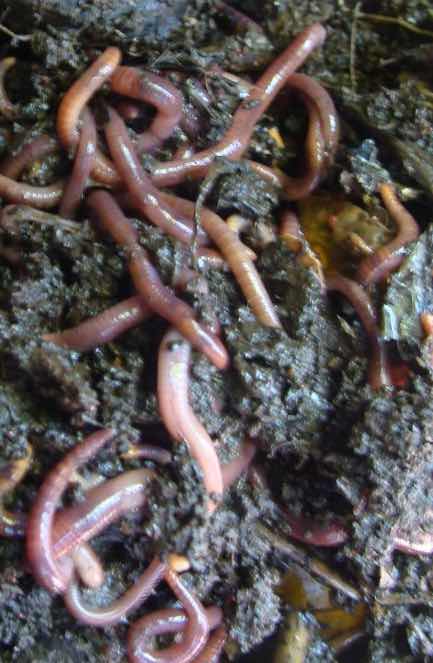
This page was last updated by Dr Bernard Preston on 9th January, 2024.
So I have set up a small experiment to evaluate the growth of a crop of corn. I planted three rows; we will irrigate the two on the right with diluted worm leachate, twice a week. The one on the left will get an equivalent amount of water but no liquid-manure.
This is not going to be a rigorous program. I will not be measuring the heights of the plants, though we may get to weigh the cobs if we are feeling strong. We will simply take successive photographs showing all three-rows; let's see what happens.
More conventionally the organic gardener would apply compost, where possible laced with cow, horse or chicken-manure. He would use crop rotation or even simultaneous planting with a legume for the nitrogen fixation rhizobia. They are perfectly satisfactory, though may not produce the effect of fertilizers.
I confess to using a little inorganic fertilizer occasionally especially on our avocados and citrus-trees; and when growing potatoes. However most of our plant-nutrients come from the compost piles that adorn every corner of the garden.
We do use some agricultural lime; though in the main, the ash from our wood-stove to counter the acidic soils in our region.
Rainbow worm farm experiments
Rainbow worm farm experiments evaluate the effect of the liquid manure on a corn-crop.
These three rows of corn were planted about six-weeks ago. As you can see they look very much the same.
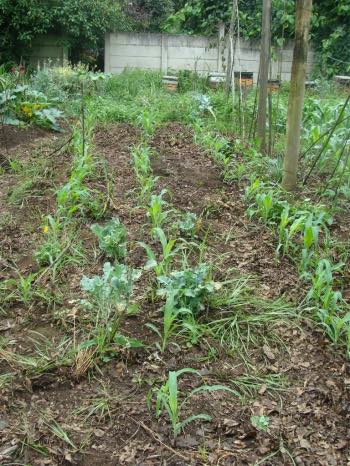
The two rows on the right shall be given a dilute mixture of worm-wee and that on the left will be irrigated with an equal amount of water that is harvested from rainfall; it acts as a control.
It is recommended that you use the worm-wee once or twice a week to feed your plants.
It probably will not be too rigorous but the aim is to
water twice a week. The first was on the 20th December; that is midsummer
in the Southern hemisphere. The second photo, see below was taken on 5
January, a fortnight later.
I am quite interested to see what effect the worm-wee has, if any. I expect the plants will be healthier but will there be a visual distinction?
Will it be dramatic or will one have to use the imagination to see the difference? And what effect does it have on the cobs?
The question may well be asked, what was planted here before? Was it the same crop throughout?
Were there green-beans where the two rows on the right are growing, providing more nitrogen?
There was a crop of broccoli plants covering all three rows; a few remain as they are still producing a few florets. Down the left side there was a row of the good-wife's famous poppies. I doubt that they would have much effect.
If there are interesting results then perhaps in the next rainbow worm farm experiments we will be a little more rigorous about these details.
This is more of a fun-exercise than a scientific experiment. If there appear to be some interesting results then perhaps a serious agriculturist might like to set up a few trials.
I might add here that the wee is something of a byproduct for us; we got into the wonder of worm-farms to generate food primarily for our hens.
In cramped quarters where they can only copulate and feed, the worms produce explosive growth. This I can attest to; we started with a few hundred and now have hundreds of thousands, perhaps millions. I'm not counting. But they reputedly double in number every month, munching their way through their own weight of organic-material every day.
Finding enough food for them is the limiting factor.
Week 1
The bees in the background will collect pollen from all the corn. This is week 1 of our experiment. Now to fertilize the two right rows with worm wee.
Newsletter
Our newsletter is entitled "create a cyan zone" at your home, preserving both yourself and Mother Earth for future generations; and the family too, of course. We promise not to spam you with daily emails promoting various products. You may get an occasional nudge to buy one of my books.
Here are the back issues.
- Lifestyle and ideal body weight
- What are ultra-processed foods?
- Investing in long-term health
- Diseases from plastic exposure
- Intensive lifestyle management for obesity has limited value
- A world largely devoid of Parkinson's Disease
- The impact of friendly bacteria in the tum on the prevention of cancer
- There's a hole in the bucket
- Everyone is talking about weight loss drugs
- Pull the sweet tooth
- If you suffer from heartburn plant a susu
- Refined maize meal and stunting
- Should agriculture and industry get priority for water and electricity?
- Nature is calling
- Mill your own flour
- Bake your own sourdough bread
- Microplastics from our water
- Alternative types of water storage
- Wear your clothes out
- Comfort foods
- Create a bee-friendly environment
- Go to bed slightly hungry
- Keep bees
- Blue zone folk are religious
- Reduce plastic waste
- Family is important
- What can go in compost?
- Grow broad beans for longevity
- Harvest and store sunshine
- Blue zone exercise
- Harvest and store your rainwater
- Create a cyan zone at your home
Week 3
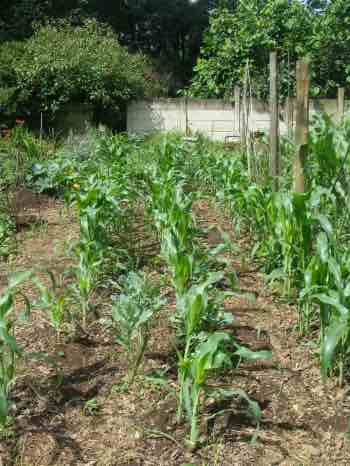
Week 3 or 16 days later to be precise, here is the growth. Can you see you a change in our rainbow worm farm experiments? I confess I can't. At the far end in front of the bee-hives, the corn plants in the two left rows seem to be ahead of that on the right; but in the foreground, the control seems to be doing better.
Keep watching; at the end of the day it is whether the cobs are larger and tastier. We may do some blinded-experiments at dinner with our friends.
Week 5
It's now week 5 in our rainbow worm wee experiments with corn. We have had plenty of rain and heat; the plants are bolting up. In the distance the two-rows on the left seem to be marginally taller, but not those in the foreground.
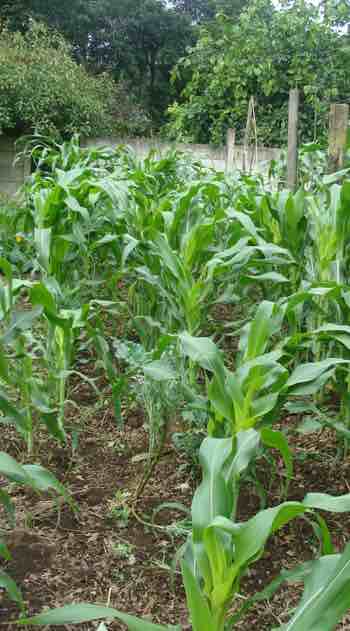
Week 7
From the side where the other photos were taken, there's really little to be seen as the corn is so tall but at week 7 it is clear that the two rows on the right which are getting the worm-wee are surging ahead.
However I'm more interested in the size of the cobs; that is a good few weeks off.
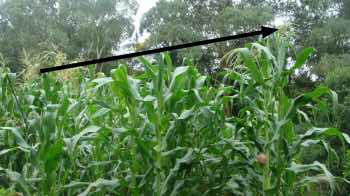
Week 14
And now it is week 14; and time to check the results of our rainbow worm farm experiments.
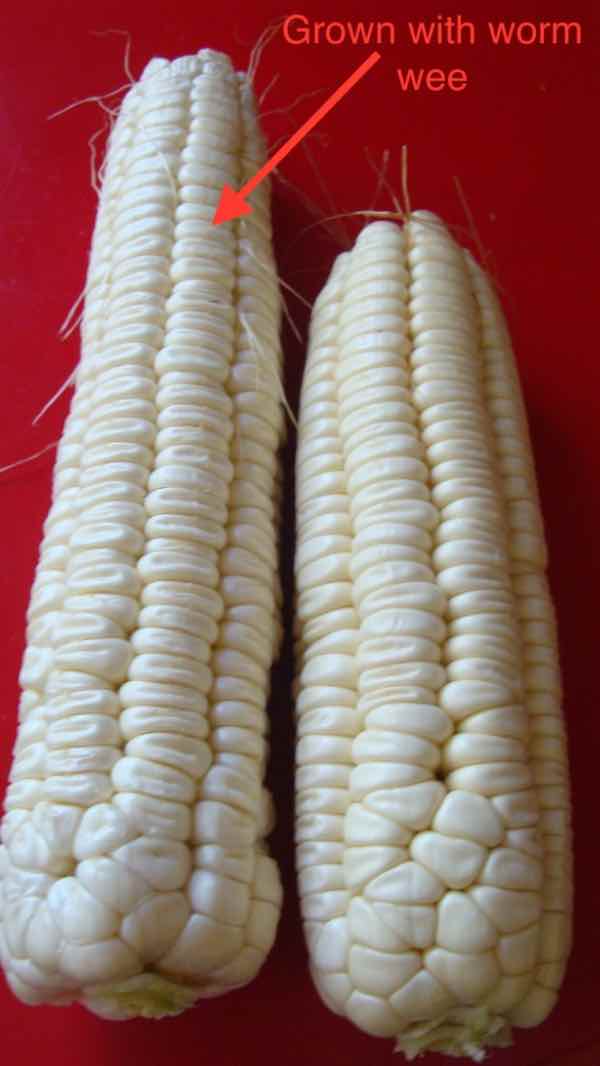
I tried to be objective. These two cobs are representative of the those from plants grown with added worm wee and those not. I should have weighed them but they were in the pot before I thought of it.
At an estimate, the cobs from plants grown in worm wee are about 25% larger; I could not detect a difference in taste.
Both cobs were a little old; those enjoyed a couple weeks earlier were more juicy and sweet.
This can hardly be described as a rigorous experiment but I'm convinced; the worm wee does seem to make a remarkable difference.
How to grow corn
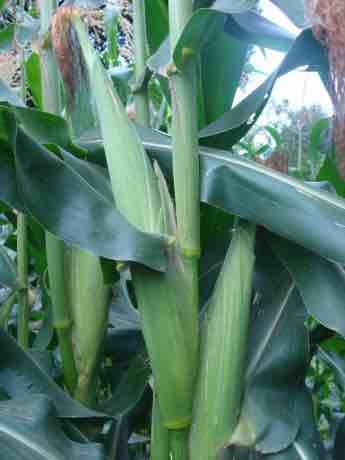
How to grow corn is of course very basic for even the beginner. You purchase a packet of seeds, prepare a piece of ground and plant them about a foot apart, one-inch deep. Over and above that of course we're going to be doing these rainbow worm farm experiments.
You might thin them if you are feeling strong. I do not; the production per plant might be greater then but the overall weight of maize rather less.
This is going to be an ongoing-page; I will only add new photographs when there is something worth seeing. Come and visit our rainbow worm farm experiments every couple weeks if you are interested.
How often should you feed your worms?
There is plenty of room for rainbow worm farm experiments but in short do not starve the critters. You cannot feed them too much; they may not eat it all but it will not hurt them like an insufficiency.
I have six-containers of about half a cubic metre. Each is fed every six-weeks with a very large amount of food; twenty to forty litres of rotting fruit and vegetables.
Recently I went on holiday which meant that some were not fed for nearly two months; they thrived, perhaps even better than with a six-weekly feed.
Just as important is to make sure they remain damp but not sopping-wet.
Dip a fork into your worm-farm at least every couple of weeks; you will soon see if they are thriving.
Do remember that water is the greatest enemy of the worm farm; keep the rain out.
Insect pests
Don the Worm Wizzard[2] tells me that without a doubt, the vermi-leachate makes a great insecticide, inhibiting for example aphids and red spider mites; use a 10:1 dilution.
Bernard Preston
Bernard Preston is a semi-retired DC whose other passion is for a sustainable planet; a place where our grandchildren will be able to thrive and enjoy a full life as we have. We call it building a Cyan Zone, a composite of green for Mother Earth and blue for longevity as done in places like Loma-Linda and Ikaria.
Or will they be cursing us for so polluting and destroying their world that they have no future? A silent spring certainly is in the offing. These rainbow worm farm experiments are part of our tiny contribution. It's also been a lot of fun.
What's your contribution?
When browsing use right click and "Open Link in New Tab" or you may get a bad gateway signal.
Did you find this page interesting? How about forwarding it to a friendly book or food junkie? Better still, a social media tick would help.
- Bernard Preston homepage
- Worm farms
- Rainbow Worm Farm Experiments
Address:
56 Groenekloof Rd,
Hilton, KZN
South Africa
Website:
https://www.bernard-preston.com